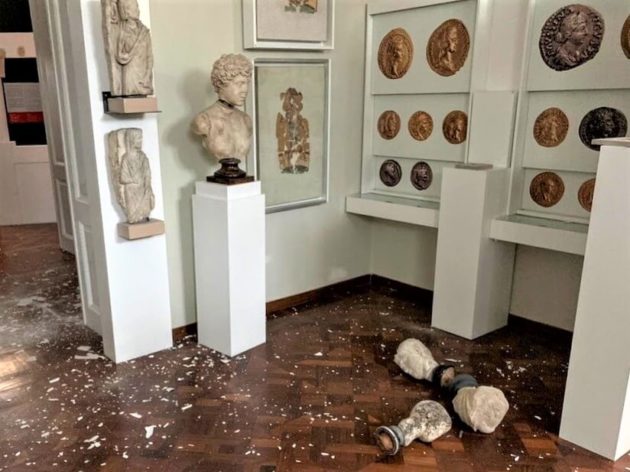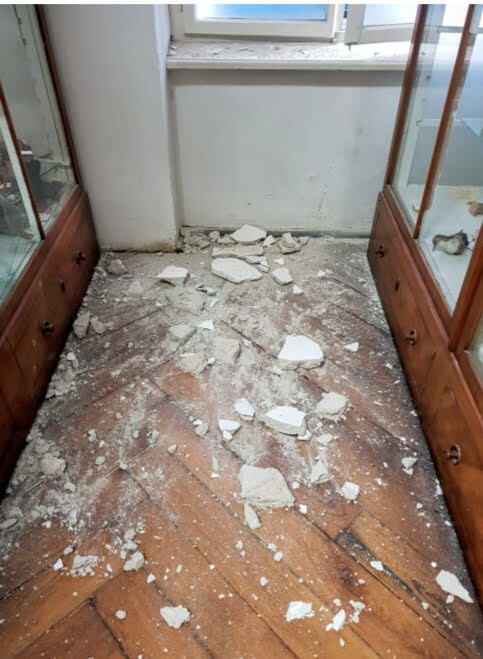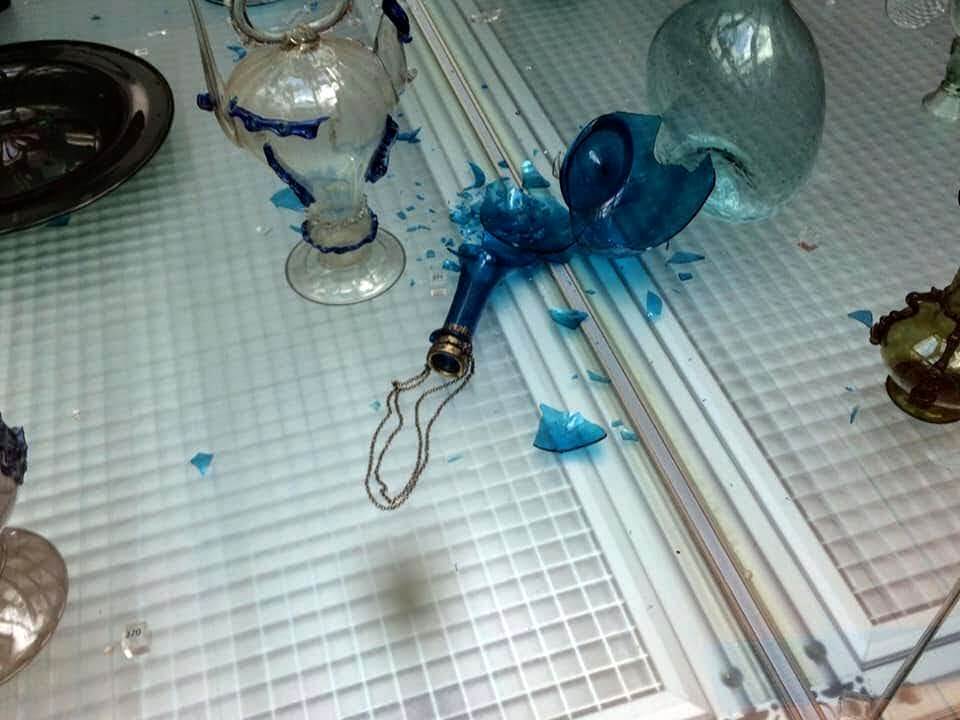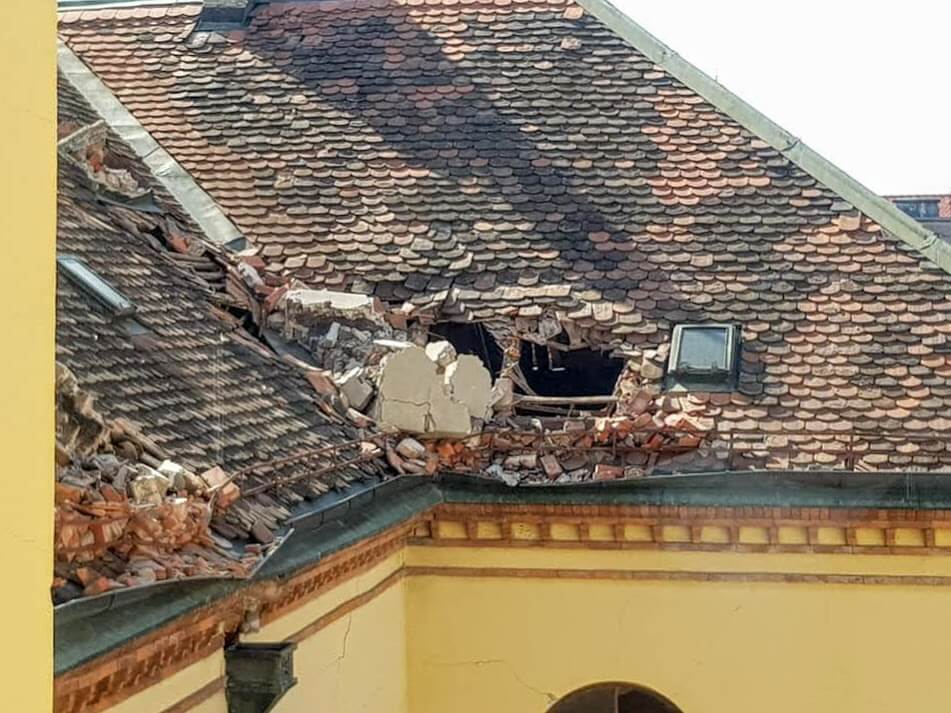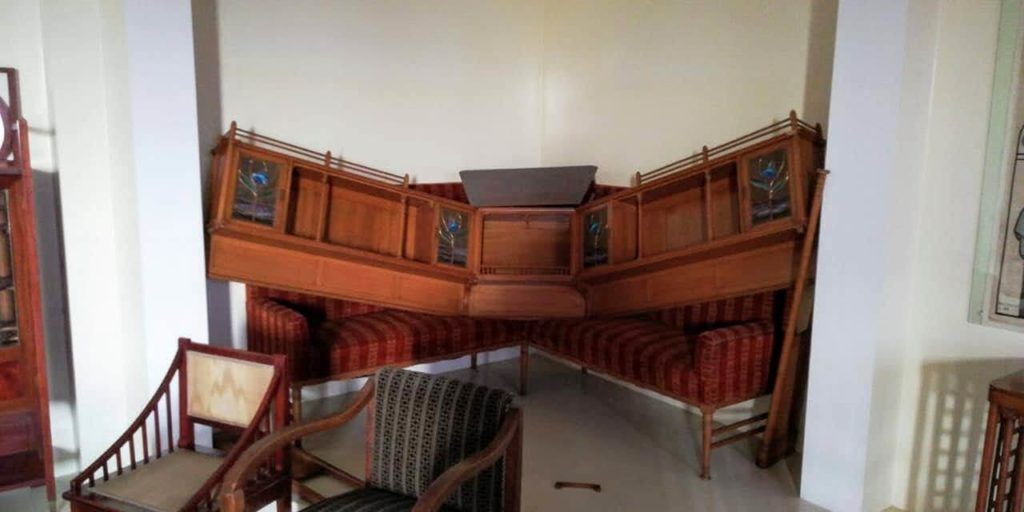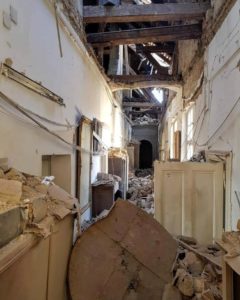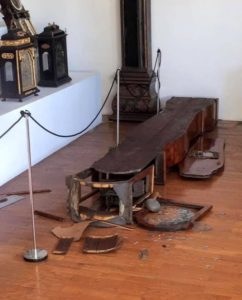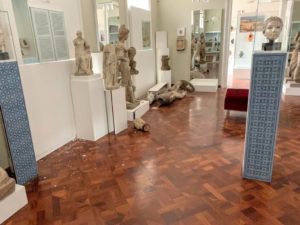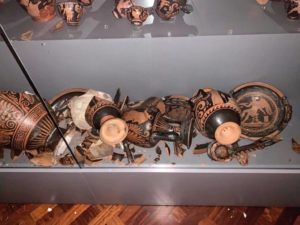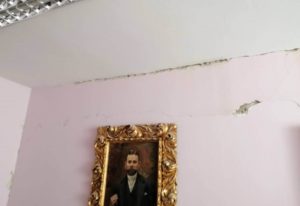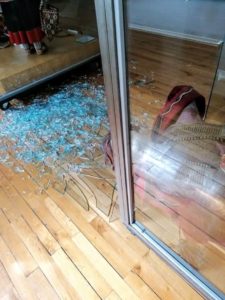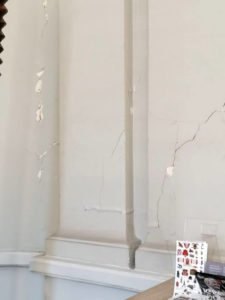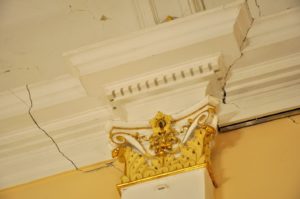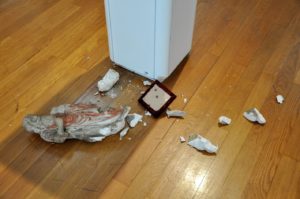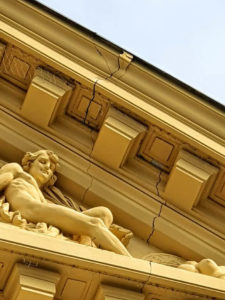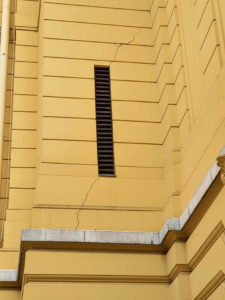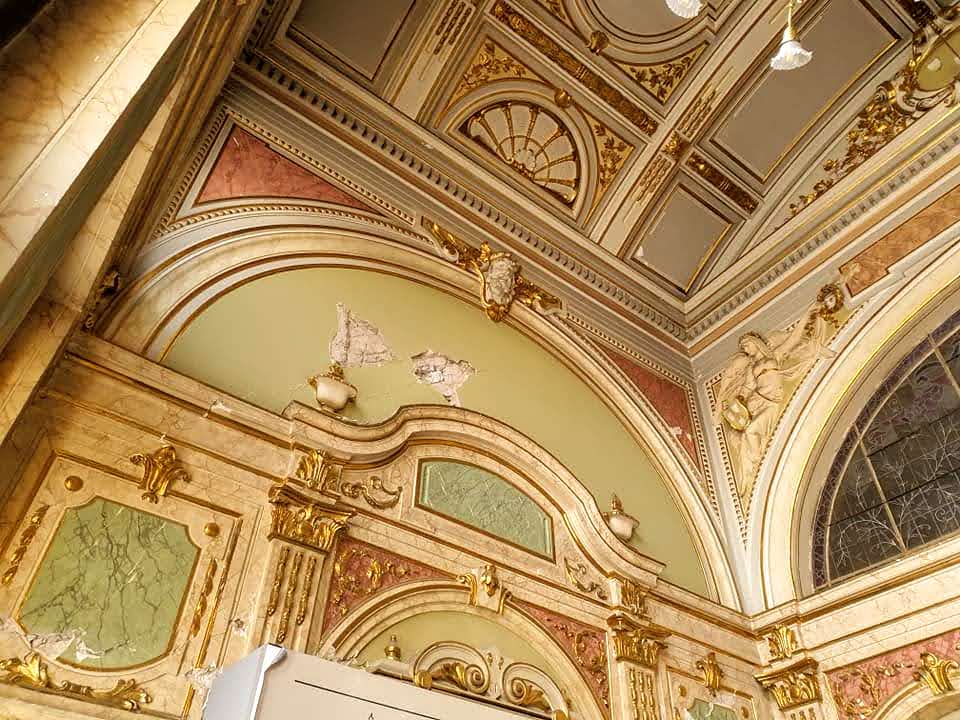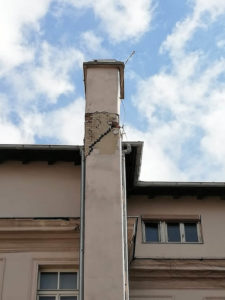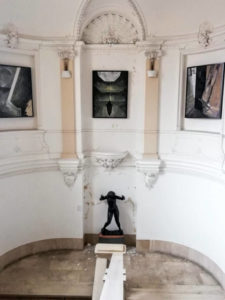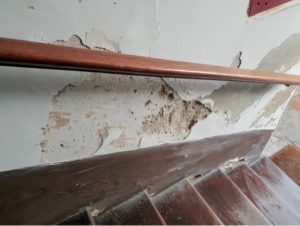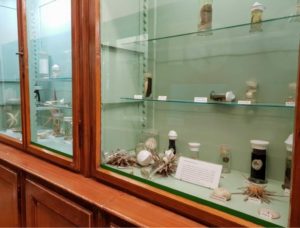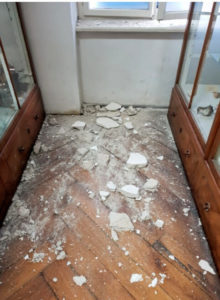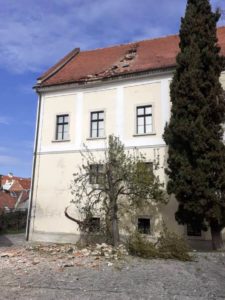On Sunday, March 22nd 2020 the capital of Croatia, Zagreb, was hit by a strong 5.4 magnitude earthquake.
Since the rest of the world, as well as Croatia, are in the midst of the coronavirus COVID-19 pandemic, it’s the information that went somehow unnoticed in many international news.
And it’s only understandable, of course.
But, to me looking to the images of my home town broken, from the other side of Europe, it was an unbelievable, heart-breaking image.
My home town wounded. Old historical facades broken.
Probably the hardest to see was one of the symbols of the city, Zagreb Cathedral, missing one of its spires.
Earthquake in Zagreb
But, a few hours after the first shock, I started receiving photos from Zagreb museums. And it is then when I realised how deeply Croatia was hit.
Our art, design, architecture… A part of our cultural identity was broken.
I read somewhere that after the Van Gogh Museum in Amsterdam was robbed in 2002, and two paintings were stolen from it, Dutch people felt like a part of their cultural heritage was lost. Almost as their personal belongings were taken from their home.
That’s exactly how I felt after seeing broken glass collection at the Museum of Arts and Crafts. Or the 2000 years old ceramic vases fractured in pieces at the Archaeological Museum in Zagreb.
After the Dresden Frauenkirche was almost completely destroyed during the Allays bombing in 1945, citizens of Dresden started an initiative during which they raised the awareness among the professionals like architects and art historians. They also started a private fundraising campaign to collect the money for the symbol of their city to be rebuilt. It was all happening while the war was still going on.
Well, I wanted to start raising the awareness by showing you how big the damage is.
Museums damaged by earthquake in Zagreb
Besides the Zagreb Cathedral and many residential Historicistic buildings in the city centre, cultural institutions were shattered the most in the strong earthquake on March 22nd.
It’s hard, and too early, to say what is the level of damage in museums of Zagreb, so far. It’s quite dangerous and not allowed to get in many of them right now (like, for example, to the Museum of Arts and Crafts).
The COVID-19 pandemic measurements are also making it more difficult for museum employees to inspect the damages. And the evacuation of some very vulnerable and valuable artefacts is quite challenging because of the danger of falling buildings and many smaller earthquakes still shaking Zagreb.
We’ll probably know much better the amount of damage in the following months. And the proper reconstruction will be possible once the pandemic is over.
However, here are some of the photos from Zagreb museums and the damage we know about so far. Hopefully, they could help us in making the action plans for their reparation.
Museum of Arts and Crafts
Image source: Museum of Arts and Crafts
Museum of Arts and Crafts is one of the oldest museums in Croatia. And one of the most popular museums in Zagreb. Many visitors of a quite famous Zagreb Christmas Market enjoyed in their exhibition ‘The Nutcracker’ (Orašar) last December.
Together with the School of Applied Arts and Design, located in the same building, it’s a place from where generations of Croatian artists and designers came from.
It’s also the museum in Zagreb that was damaged the worst during the Sunday earthquake. The building, built by Herman Bollé in 1888, has damaged static and it’s not safe to be inside of it. However, there is a risk of building collapsing and destroying its valuable collection.
A large portion of its exhibits is broken, especially the glass collection, old clocks and furniture.
⤷ Read more about the Museum of Arts and Crafts here
Archaeological Museum in Zagreb
Located in one of the most beautiful Zagreb’s Historicistic palaces, both the building and the collection of Archaeological Museum are badly damaged. The building itself has many cracks on its walls and damages on a roof.
Image source: Archaeological Museum
Most important exhibits, Zagreb’s Flax Book (Liber Linteus Zagrabiensis) and ‘Zagreb Mummy’ are secured. Zagreb’s Flax Book contains the most extensive preserved inscription in the Etruscan language. And it’s the only flex book from the Antiquity.
Many other collections and objects made of ceramics and glass are broken, too.
⤷ Read more about the Archaeological Museum here
Ethnographic Museum
Image source: Ethnographic Museum
The building of the Ethnographic Museum also got some severe damages during the Zagreb earthquake on March 22nd. There are many cracks on the walls, especially close to the joints with the ceiling. The main staircase is broken, as well.
Luckily, the museum’s roof and façade were recently restored, so there are no significant damages on them. It’s a great example of how regular inspection and restoration helps in protecting those old buildings.
However, at the galleries, many glass cases are broken. And some vulnerable objects made of glass or ceramics are shattered.
⤷ Read more about the Ethnographic Museum here
Mimara Museum
Image source: Mimara Museum
One of the most beautiful museum buildings in Croatian capital, the one of Mimara Museum, has also been badly damaged during the earthquake in Zagreb. There are breakages on the ceilings and walls.
However, a part of its art collection is also severely damaged and will require a thorough restoration.
⤷ Read more about the Mimara Museum here
Art Pavilion in Zagreb
Image source: Art Pavilion
One of the symbols of Zagreb and Croatian architecture from the end of the 19th century, the Art Pavilion (Umjetnički paviljon) got severe damages on its architecture, as well.
⤷ Read more about the Art Pavilion in Zagreb here
The National Museum of Modern Art
Image source: The National Museum of Modern Art (Damir Medved)
The National Museum of Modern Art (Moderna Galerija) is a place to see some of the most famous Croatian paintings from the end of the 19th and the beginning of the 20th century. Some of the most renowned art pieces made by Vlaho Bukovac are located there.
Luckily, it seems as the museum didn’t experience any significant damages. There are some cracks on the walls, and some of the objects fallen off the shelves. So, there could be some issues discovered later on.
⤷ Read more about the National Museum of Modern Art here
Croatian Natural History Museum
Image source: Croatian Natural History Museum
Natural History Museums is the largest museum in Croatia with a collection of more than one million objects.
Amadeo Palace, in which it is located, was severely shattered during the Zagreb earthquake. And for the security reasons can’t be used anymore. Many special boxes in which the fragile objects were kept are broken. And with each minute they are being more and more damaged. Because of the danger of the building collapsing, its collection has to be evacuated as soon as possible. Which in current circumstances is quite hard to be done.
⤷ Read more about the Natural History Museum here
Croatian History Museum
Image source: Croatian History Museum
Located in a historical city palace that used to be home to many Croatian noble families throughout the past, Croatian History Museum wasn’t exception among the Zagreb museums damaged in an earthquake from a few days ago.
None of the objects are damaged, but the building is not safe to be at anymore. So, as soon as it’s going to be possible, all the artefacts are going to be evacuated from the building.
⤷ Read more about the Croatian History Museum here
Zagreb earthquake in 1880
This is not the first strong earthquake to hit Zagreb. Everyone from Croatian capital heard about the big earthquake in Zagreb from 1880.
As an art history student, I saw many blurry photos of old buildings in Zagreb destroyed in a strong earthquake. Breakage on the Zagreb Cathedral, which was one of the buildings the worst hit by it, made an architect Herman Bollé to stay in Zagreb longer than planned. It also triggered a vast architectural activity in the city during the next twenty years.
From the historical documents, it’s visible how many buildings in the city centre needed repair. Churches, schools, residential buildings…
Zagreb became a huge construction site, and many beautiful city palaces were built during that time. Including the Archaeological Museum, Art Pavilion, Museum of Arts and Crafts, Ethnographic Museum etc.
Sadly, the majority of those buildings were damaged the most in the recent earthquake.
What next?
The situation with museums in Zagreb is quite challenging right now. Some buildings are so badly damaged that it’s dangerous to be inside of them. On the other hand, many collections have to be evacuated as soon as possible. Which is also both dangerous and hard to be done right now in a time of a huge COVID-19 pandemic.
After the first task of securing all the work of art, we’ll need to slowly repair and rebuild our museums in Zagreb. The aftermath of the last strong earthquake in 1880, was rebuilding Croatian capital and making its city centre a lovely modern urban area.
Let’s try and do the same now. We are grieving in a moment. But, let’s make a plan on how to rebuild our museums and put our cultural heritage back in the restored, shiny new glass cases of our museums in Zagreb soon.
And we can make a big party to celebrate them again then. When we’ll be able to gather, hug and celebrate our art. Just as Amsterdammers did when their stolen Van Gogh’s paintings were brought back home in 2016.
*Many thanks to Mrs. Tiha Dabac Golubić and to all of the museums for helping in creating this article, and providing me with the photos of the damages.

